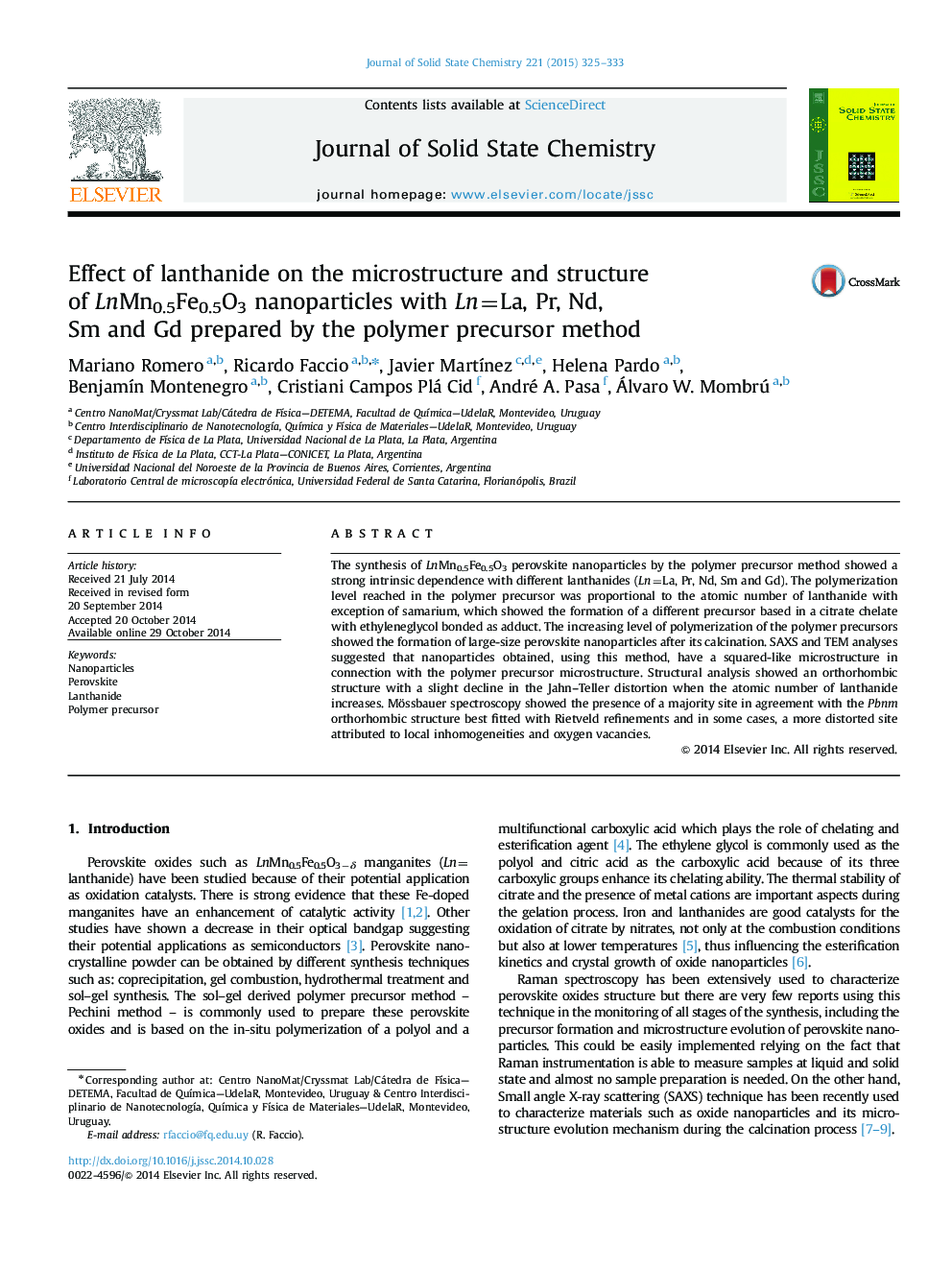| Article ID | Journal | Published Year | Pages | File Type |
|---|---|---|---|---|
| 1329641 | Journal of Solid State Chemistry | 2015 | 9 Pages |
•Precursor polymerization level is lower in the presence of lighter lanthanides.•Lighter lanthanide perovskite nanoparticles after calcination are lower-sized.•Nanoparticles obtained by this method have lamellae microstructure.•Jahn–Teller distortion declines for heavier lanthanide perovskites.•Oxygen vacancy phase was observed in lighter lanthanide perovskites.
The synthesis of LnMn0.5Fe0.5O3 perovskite nanoparticles by the polymer precursor method showed a strong intrinsic dependence with different lanthanides (Ln=La, Pr, Nd, Sm and Gd). The polymerization level reached in the polymer precursor was proportional to the atomic number of lanthanide with exception of samarium, which showed the formation of a different precursor based in a citrate chelate with ethyleneglycol bonded as adduct. The increasing level of polymerization of the polymer precursors showed the formation of large-size perovskite nanoparticles after its calcination. SAXS and TEM analyses suggested that nanoparticles obtained, using this method, have a squared-like microstructure in connection with the polymer precursor microstructure. Structural analysis showed an orthorhombic structure with a slight decline in the Jahn–Teller distortion when the atomic number of lanthanide increases. Mössbauer spectroscopy showed the presence of a majority site in agreement with the Pbnm orthorhombic structure best fitted with Rietveld refinements and in some cases, a more distorted site attributed to local inhomogeneities and oxygen vacancies.
Graphical abstractFigure optionsDownload full-size imageDownload as PowerPoint slide
